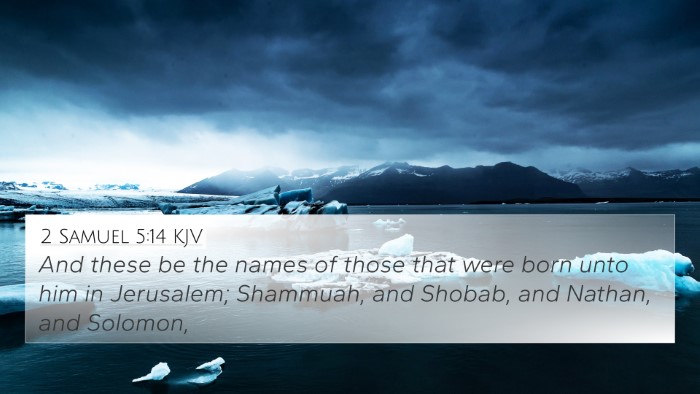Understanding 1 Chronicles 3:8
1 Chronicles 3:8 states, "And the sons of Uzziah; Meraioth, and the sons of Meraioth; Ammariah, and Ahitub." This verse encapsulates a segment of the genealogical record of the priestly lineage, emphasizing the importance of ancestry in the context of Israel's history and priestly duties.
Insights from Public Domain Commentaries
Matthew Henry's Commentary
Matthew Henry highlights the significance of genealogies in the Bible, particularly noting how they serve as a means of establishing identity and authority in the priestly line. The mention of Uzziah, Meraioth, Ammariah, and Ahitub reflects the continuity of priestly succession, underscoring God's providential plan through generations.
Albert Barnes' Notes
Albert Barnes points out that the inclusion of these names serves to document the priestly lineage, as well as to maintain the historical integrity of the priesthood. Each name mentioned corresponds to a vital role in the Temple service, illustrating the ordered system God established for worship and sacrifice in Israel.
Adam Clarke's Commentary
Adam Clarke adds that this verse reflects the importance placed upon the heritage of the Levites, showing how critical it was for them to trace their family lines back to Aaron. This practice of keeping detailed records was essential for functioning within the temple, emphasizing obedience and faithfulness to God's commands regarding worship.
Related Bible References
1 Chronicles 3:8 has connections with various other scripture passages that further elaborate on the themes of genealogy, priesthood, and God’s promises:
- Exodus 28:1 - The establishment of the priestly office.
- Numbers 3:10 - Instructions on the roles of Levites and priests.
- 1 Chronicles 6:4-15 - Genealogy of the Levites and priests.
- Hebrews 7:14 - The significance of the priesthood of Aaron in the New Testament.
- Matthew 1:12 - Jesus' genealogy connecting back to David and ultimately Aaron.
- Malachi 2:4-7 - The importance of priesthood in teaching God's law.
- Luke 1:5 - The context of priest Zechariah, showcasing the continuation of priestly roles.
Thematic Connections
The themes in 1 Chronicles 3:8 resonate throughout the Bible, creating vital connections between the Old and New Testaments.
- Heritage - The emphasis on lineage highlights how God fulfills His promises across generations.
- Priesthood - The priestly lineage underscores God's desire for mediation between Himself and His people.
- Obedience - Each name included signifies the importance of adhering to God's commands regarding worship and service.
SEO Content for Bible Cross-References
As readers search for Bible verse cross-references, it's essential to explore the connections between various Bible verses that relate to each other, such as the lineage established in this verse. Understanding how to use Bible cross-references can deepen their study, allowing for comparative Bible verse analysis that highlights the continuity within God's unfolding story.
Tools for Bible Cross-Referencing
Tools like a Bible concordance or a Bible cross-reference guide are invaluable for believers seeking to understand inter-Biblical dialogue. By utilizing a Bible reference resource, one can uncover deep insights into how these genealogies and priestly functions persist through scripture, fostering a greater comprehension of God's overarching narrative.
Long-Tail Keywords Exploration
For those desiring a more detailed exploration, they might consider how to find cross-references in the Bible or engaging in a comparative study of Pauline epistles, linking back to the priestly themes from 1 Chronicles. Such studies can reveal cross-references Bible verses for sermon preparation that enrich their spiritual journey and enhance teaching opportunities.
Conclusion
In summary, 1 Chronicles 3:8 is not merely a list of names; rather, it is a profound insight into God's faithfulness throughout generations. It serves as an anchor for understanding our spiritual heritage and the continuity of worship as ordained by God. By examining cross-references within the scriptures, we can perceive the intricate tapestry of God's Word and its ongoing relevance in our lives today.




